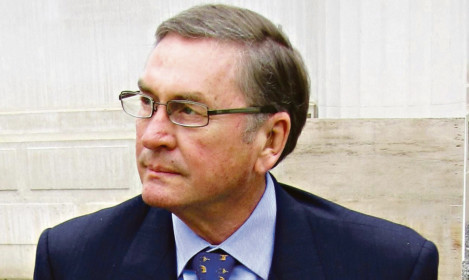
The year may be only a few days old but at Westminster all eyes are on 2015 and the general election due to take place next May.
Heaven knows what the Tories have been up to over Christmas but a gloom seems to have settled upon them. There’s a gathering pessimism about their chances at the next general election.
Increasing numbers of articles and blogs ask the same question why aren’t the Tories doing better?
Conventional wisdom says that an improving economy should boost their electoral hopes. And there’s scant evidence of a swell of popularity behind Labour leader Ed Miliband. Yet Labour led in the opinion polls throughout 2013 and it’s not an unreasonable prediction to expect the Opposition to remain ahead for the next 12 months, too.
May’s European elections have already been all but written off as a two-horse race between Labour and Ukip. A ripe time then for Tory mega donor, mischief-maker and former friend of David Cameron, Lord Ashcroft, to enter the fray.
Lord Ashcroft fell out with the PM after the last election when he criticised the Tory election operation. Since then he’s set about offering unsolicited advice on how the Tories can win a majority in 2015. All the while, pointedly reminding the party that Cameron failed do so last time.
He’s just published part four of his Project Blueprint series of papers looking at how the Conservatives can win. His conclusion is that they can. His evidence is that they can’t.
Ashcroft, a billionaire, spends a fortune on huge polls involving thousands of respondents. Most polls use a panel of less than 1,000 his latest questioned 8,000.
And Ashcroft is canny, you don’t build up a series of multi-billion pound enterprises without a certain amount of nous.
He knows nationwide polls are of limited value and that elections are won and lost in the swing seats where either, or sometimes any, party can win.
So the opinion polling is backed up by focus groups that take place in key target seats, though it’s worth pointing out on this occasion he got no further north than Halifax suggesting that even he has, to all intents and purposes, given up on the Conservatives winning much beyond Leeds. Bad news for northern Tories in tight seats like the affable John Stevenson in Carlisle or the oafish Alec Shelbrooke in Elmet and Rothwell.
Of course, Ashcroft’s analysis still matters to those in the north because if he’s right then the Tories can win, and rule, without them.
He’s split potential Tory voters into four main categories loyalists, defectors, considerers and joiners. The largest category is the defectors 37% who backed the Tories in 2010 but say they won’t do so again next time out.
A decent chunk of this group has gone Ukip. However, the same people say they don’t want a Labour government so it’s not unreasonable to expect them to return to the Tory fold if they think it’s the only way to keep Ed Miliband out of Downing Street.
And, of course, it doesn’t matter how many people switch away from the Tories if just as many join up from the other parties.
But that’s not the case just 6% have switched to the Conservative cause, impressed by their economic management. A paltry further 3% would consider voting Tory in 2015.
Lord Ashcroft summed up his latest report by saying: “This research shows it is far from impossible for the Tories to win outright. But to do so they will need the votes of everyone who supported them last time, plus practically everyone who is even prepared to think about doing so next time.”
Essentially his message, for all the millions spent on researching it, is that to win in 2015 the Tories must appeal to as many voters as possible.
That’s generally how to win elections.

Enjoy the convenience of having The Sunday Post delivered as a digital ePaper straight to your smartphone, tablet or computer.
Subscribe for only £5.49 a month and enjoy all the benefits of the printed paper as a digital replica.
Subscribe